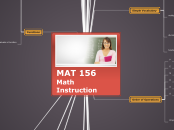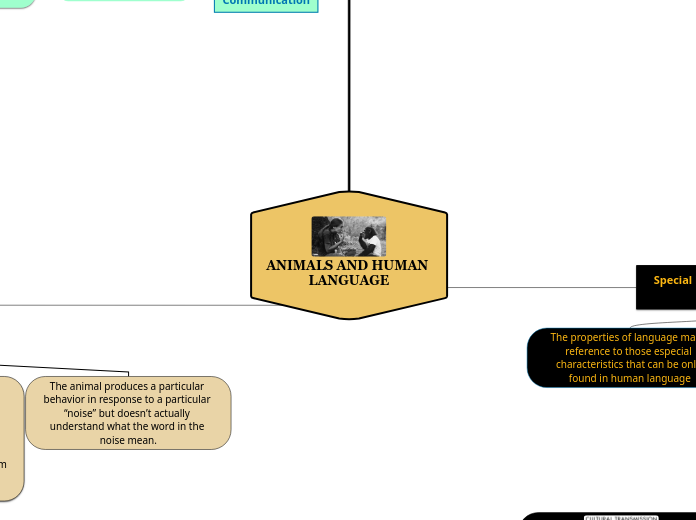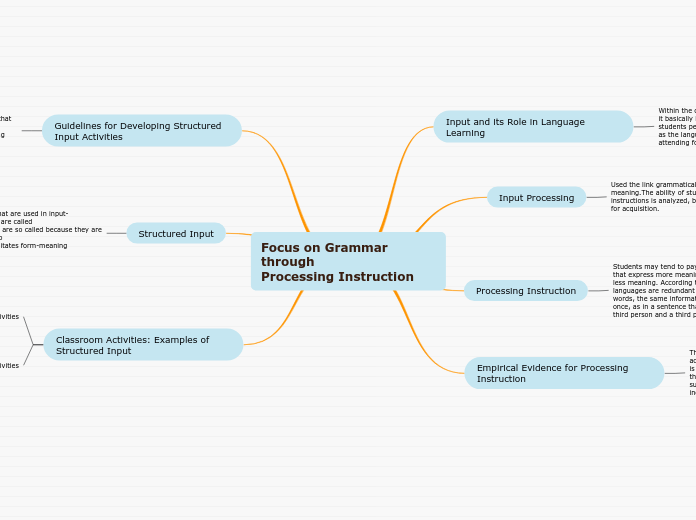MAT 156 Math Instruction
Fractions
Vocabulary
Denominator
Numerator
Fraction
Part
Whole
Adding & Subtracting Fractions
1/2 + 1/2 = 1
Fraction Bars
Equivalent Fractions
3/4 = 6/8 = 12/16
Decimals to Fractions, etc.
Rounding Fractions
4 6/7 + 5 2/9 =
5 + 5 =
Fraction Diagrams
-3...-2...-1...0...1...2...3
3-D Example
2-D Parts of a Whole
Functions
Evaluate a Function
Arrow Diagram
Make a Table
f(x) = x+2
f(3) = (3) + 2
f(2) = (2) + 2
f(1) = (1) + 2
Graph
Equation
Ordered Pairs
Understanding Multiplication & Division
Long Division
Circle
B
Bring down
Check if less
Subtract
Multiply
Divide
Repeated Addition
3 x 4 = 3+3+3+3
Inverse Operations
Addition is the inverse of subtraction
Multiplication is the inverse of division
Venn Diagrams
Finding the nth Term
Number Sequences
Geometric
multiplication/division
an = a1r^n-1
Fibonacci
previous term + current term = next term in the sequence
1, 2, 3, 5, 8, 13...
Arithmetic
addition/subtraction
an = a1+(n-1)d
Understanding Addition and Subtraction
Manipulatives, then Paper & Pencil
number line
tens
doubles
take away models
counting blocks
fact families
counting back/on
Subtraction of Whole Numbers
Adding & Subtracting Integers
Equations
5 + (-6) = -1
Number Line
Chip Model
Least Common Multiple & Greatest Common Denominator
Prime Factorization
Ladder Method
Number Line
Intersection of Sets
40: 1, 2, 4, 5, 8, 10
32: 1, 2, 4, 8, 32
20: 1, 2, 4, 5, 20
Prime & Composite Numbers
Color Map
Subtopic
Factor Trees
Rainbow
Order of Operations
Properties
Closure
Identity
of Zero - addition/ multiplication
of One - addition/mulitiplication
Distributive
Commutative
Associative
S
Subtraction
A
Division
Multiplication
E
Exponents
P
Parenthesis
Simple Vocabulary
function
f(x)=x+2; (1,3)(2,4)(3,5)
Every domain (input, x) has exactly one range (output, y)
division
quotient
diviisor
dividend
multiplication
product
factors
subtraction
minuend
subtrend
difference/remainder
Addition
sum
addends
One-to-One Correspondences
Outfit example:
2 pants & 2 shirts = 6 possible outfits
Make a table or tree
Brown - brown/yellpw, brown/red, brown/green
Blue - blue/yellow. blue/red, blue/green
2 pants = blue, brown; 3 shirts = yellow, red, green
Numeration Systems
Chinese
Bases
Tally Marks
Arabic
Roman Numerals
M
= 1,000
D
= 500
C
= 100
L
= 50
X
= 10
V
= 5
I
= 1
Main topic
Sum of Sequential Numbers
Odd
S = 1+3+5+7...+101
Even
S = 2+4+6+8+...+100
Normal Sequence
S = 1+2+3+4+5...+100
S = 5,050
S = (100 x 101)/2
2S = 100 x 101
So there are 100 sums that equal 101
1+100=101, 2+99 =101, 3+98=101...
Polya's 4 Steps to Solve a Problem
Examples of Problem Solving Plans
indirect/direct resasoning
guess & check
identify a subgoal
make a table/diagram
working backwards (input/output problem)
equations
4 Steps
Look Back
Carry Out the Plan
Devise a Plan
Understand the Problem









